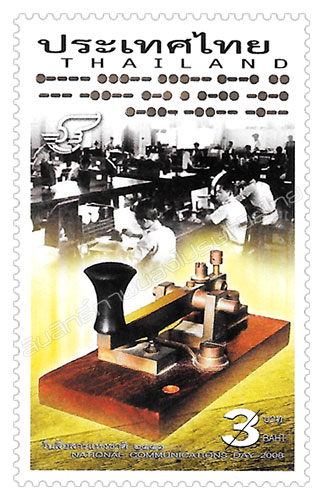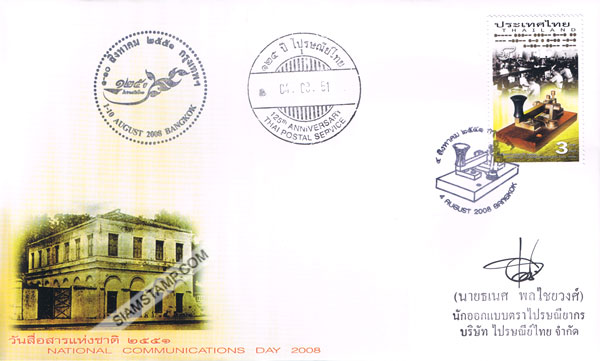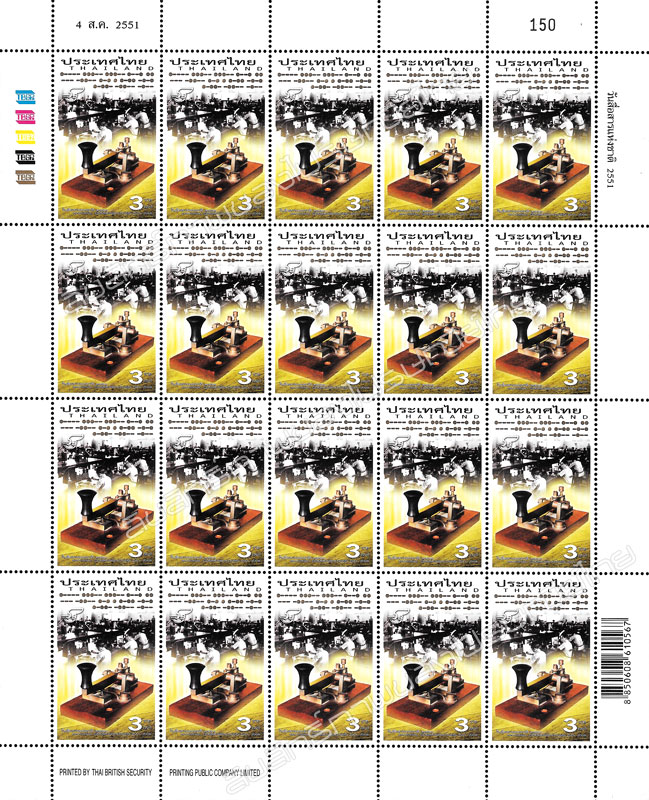| Details :
|
In the past when technology is still underdeveloped, sending letters are the means of how people comunicate with one another. But, for a faster service, "telegram" allows people to send and receive telegraphic information within the country and aboard.
Sending telegraphic messages relies on the decoding of the message from both the sending and the receiving ends. There are two types of code, click and hold (long hold) and click and release (short hold), which are replaced by the " . " and " - " (dot and dash). This is called the "Morse Code" which uses the advantage of the open-close electromagnetic system where electricity flow trough the coil wire which then pulled on a piece of metal when electricity was passed trough it. This pulling action causes both the short or the long sound.
The first experience of Thailand and telegram started in 1875 when King RAMA 5th instructed the Directorate of Joint Logistics to construct the first telegraphic line from Bangkok to Pak Nam. The telegraph service was opened for public use ever since. However, with the development of technology in communication in modern day, telegraphic service begins to play less of an important role in people's everyday lives. On May 1st 2008, the lesser used telegraphic message service has become merely a history of Thailand.
Quantity of stamps: 1,000,000 Stamps
Sheet Composition: 20 stamps per sheet
Printing Process: Lithography Multi-colour
Designer : Thaneth Ponchaiwong (Thailand Post Company Limited)
FDC Price: 10 Baht
Quantity of FDC : 15,000 covers |







